An important new cultural entity was born today in Viareggio: it is the Alfredo Catarsini 1899 Foundation named after the Versilia artist Alfredo Catarsini (Viareggio, 1899 - 1993), who was a painter, writer, critic and animator of cultural proposals. A native of Viareggio, Alfredo Catarsini traversed the entire twentieth century: at the age of 15 he met Amedeo Modigliani in Paris, and in the following years he got to know intellectuals and artists such as Filippo Tommaso Marinetti, Lorenzo Viani, Carlo Carrà, Cesare Garboli, Leonida Repaci, Giuseppe Ungaretti, and Moses Levy; he was also present at three editions of the Venice Biennale (1942, 1948, and 1950) and five times participated in the Quadriennale in Rome.
On the occasion of the retrospective exhibition dedicated to him in 2005 at Palazzo Panciatichi (now Palazzo del Pegaso, seat of the Regional Council of Tuscany) in Florence, the art historian Antonio Paolucci described him as “the Tuscan painter of emotion,” a definition that later became the title of the exhibition catalog, with writings by Paolucci himself, Raffaello Bertoli and Giovanna Maria Carli. And at the very end of that exhibition, his heirs donated his 1934 Self-Portrait to the Uffizi Gallery.
The Foundation named after him will operate on the Italian territory promoting actions for the conservation and promotion of Catarsini’s artistic work: it will be possible to follow the activities on the pages www.fondazionecatarsini.com, where it is possible to find content, images of many works, events and much more (a detailed biography, bibliography, exhibition curriculum, paintings divided by themes i.e. self-portraits, docks, drawings, female figures, seascapes, still lifes, landscapes, Reflexism, Mechanical Symbolism and sacred subjects, and then again the literary activity, the pages of the Foundation, including those related to the installations of Catarsini’s spaces in the civic museums of Viareggio, and additional popular content, for example videos dedicated to the artist). The birth of the Foundation comes at a precise moment, namely on the occasion of the thirty years since the anthological exhibition at Palazzo Paolina in Viareggio, the last of Alfredo Catarsini’s long artistic career, as well as forty years since the great solo exhibition at Palazzo Strozzi in Florence in 1981, where more than 370 works by the artist were shown. The anniversary will be further celebrated with a retrospective held at Villa Bertelli in Forte dei Marmi from March 26 until June 6, 2021.
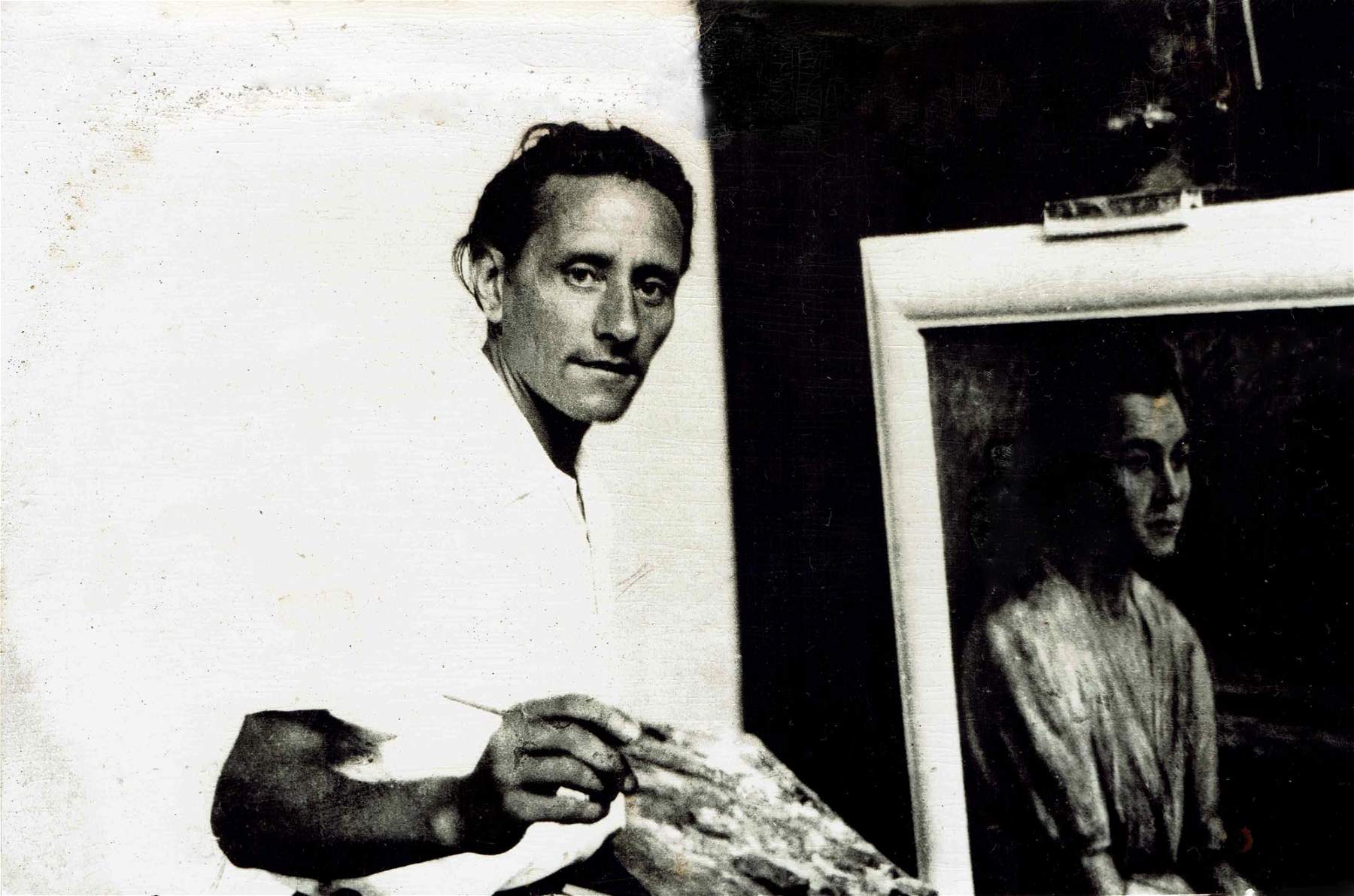 |
| Alfredo Catarsini in the studio, 1939 |
The Foundation was established at the behest of Catarsini’s granddaughter Elena Martinelli and her husband Gianvittorio Serralunga, in memory of their mother Mity Catarsini. The idea was conceived in the summer of 2020: the Foundation, inspired by the principles of the Third Sector (entities that operate not for profit but with civic or socially useful purposes), has as its statutory purposes, in addition to the preservation and enhancement of the intellectual and artistic work of Alfredo Catarsini, actions aimed at pursuing, proposing, enhancing the promotion, dissemination, education, research, training of all activities related to the “artistic disciplines” in all forms and expressions through the dissemination and expansion of human knowledge, contacts between people, entities and associations.
The particular the new institution, which is chaired by Elena Martinelli herself and is based in Viareggio, promotes: research, studies, cataloging, regarding the history and cultural, educational, artistic experience of the master Alfredo Catarsini and the “artistic disciplines” through the establishment of study centers, scholarships, and the continuation of the Prize named after the artist; widespread training regarding the work of painting and artistic disciplines in general, both for cognitive and educational purposes for schools of all levels, art institutes, universities, also for social, socio-educational, inclusion and integration purposes and for the enhancement of young talents; exhibitions, seminars, conferences, debates, internships, festivals, and any other event of special historical, artistic, and cultural interest, proceeding to the publication of the relevant proceedings, documents, and catalogs, and so on; the preservation, enhancement, and valorization of the works, furnishings, and historical archives of Atelier Alfredo Catarsini currently housed and open to the public in the Civic Museums of Villa Paolina Bonaparte in Viareggio.
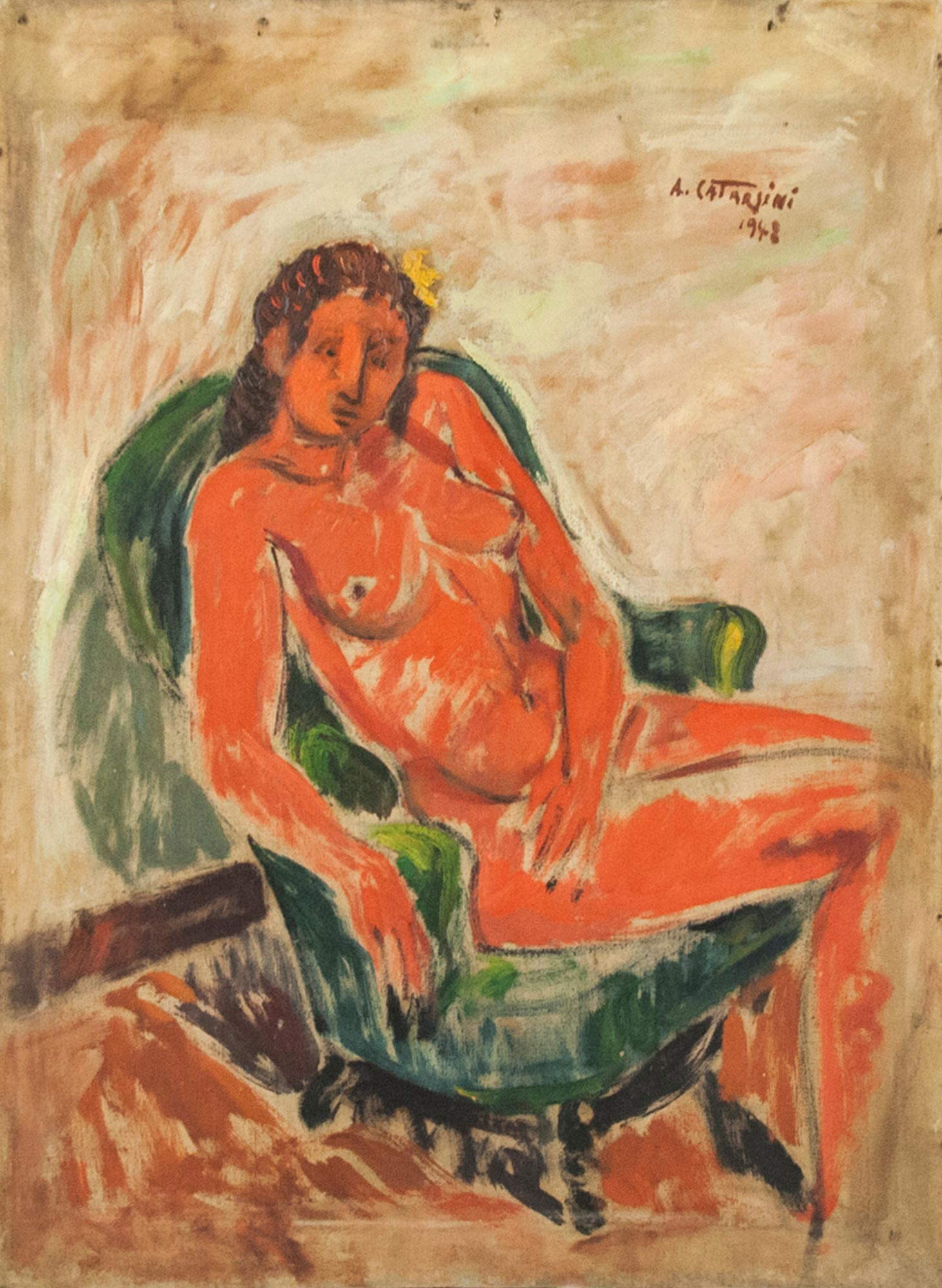 |
| Alfredo Catarsini, Red Nude in Green Armchair (1948; oil on canvas) |
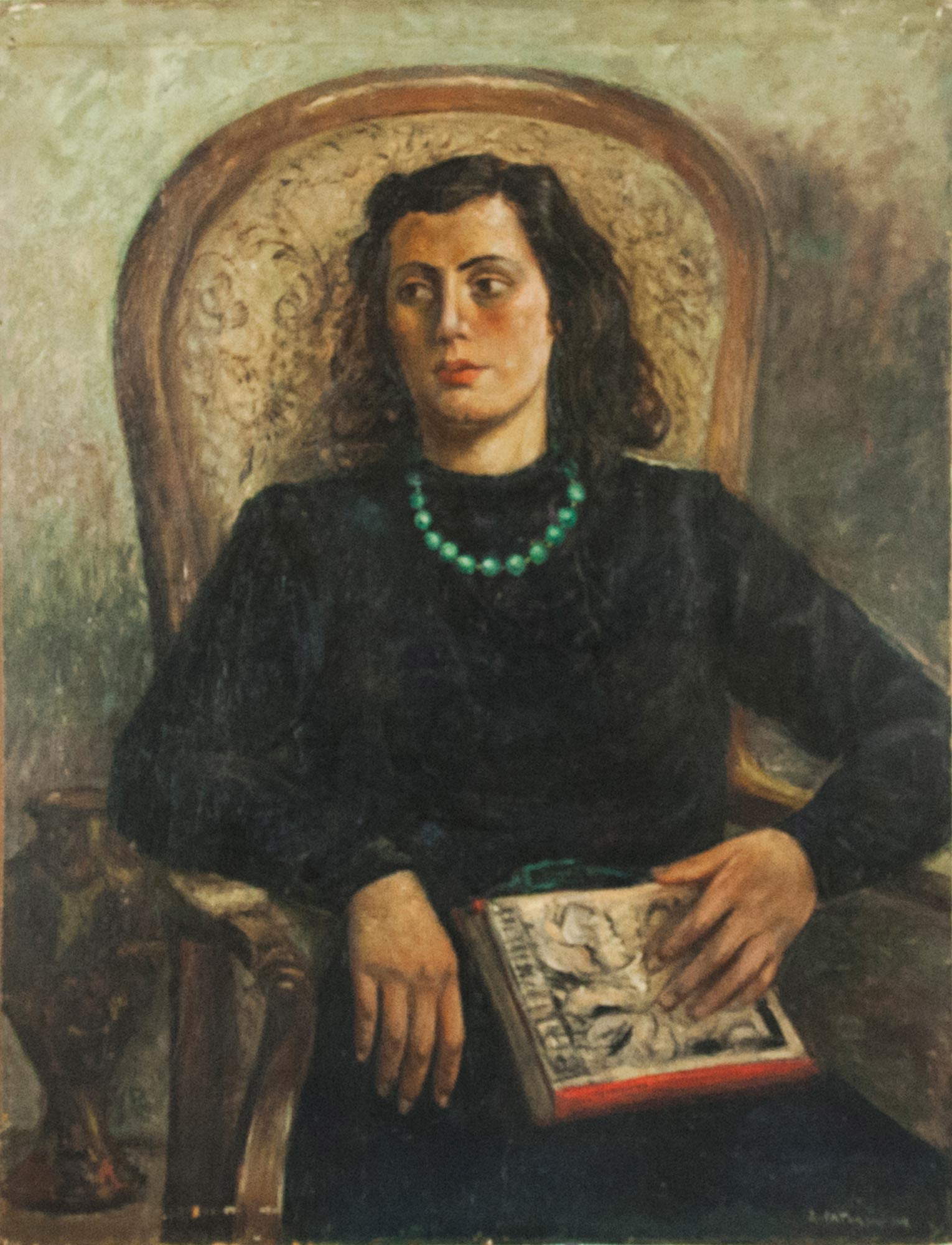 |
| Alfredo Catarsini, Portrait of Mity (1940; oil on canvas) |
The “Foundation” recently produced a volume entitled Alfredo Catarsini. True Art Fascinating Friend. Edited by Elena Martinelli and Claudia Menichini and published by Belforte editori, in nearly 200 pages with about 90 documents and 80 images, the book traces Catarsini’s artistic parabola complete with the apparatus (biography, bibliography and list of exhibitions in which Catarsini took part) and a series of contributions written for the occasion by Vittorio Sgarbi, Cristina Acidini, Andrea Buscemi, Alessandra Belluomini Pucci, Paola Chini, Elena Torre, Andrea Pucci and by the president herself, Elena Martinelli.
Again, as a reminder that Catarsini was a teacher from 1951 to 1968 at the Stagio Stagi Art Institute in Pietrasanta, among the Foundation’s statutory purposes is the enhancement of young talent, and in fact every year since 2002 in the spring the Alfredo Catarsini Prize is awarded for the best graphic/pictorial work executed from life ex tempore with freedom of technique and interpretation; the award is reserved for students at high schools in the Tuscany region. In 2012, the award was included in the “Cinema and Visual Arts” project of the “Viareggio Europa Cinema” festival. The 2021 edition, revised in the new format, is postponed until next year due to the health emergency.
Finally, starting next July 24, every penultimate Saturday of the month of July, the “Art Festival” will be established, an event dedicated to the memory of Alfredo Catarsini with free admission opening of his house-museum in Via Palermo 4 in Viareggio. For the occasion, visitors will be able to admire a selection of more than 200 works left by the painter at the time of his death representing his entire stylistic parabola, as well as participate in guided tours inside, organized by specialized personnel. The day’s program will be presented from time to time near the appointment and will also include a visit to the Catarsini Atelier in the Musei Civici - Villa Paolina Bonaparte in Viareggio. Another regular event will be on Jan. 17, Catarsini’s birthday, when the house-museum in Viareggio will open to citizens for a day of remembrance of the artist.
 |
| Alfredo Catarsini, Self-Portrait (1934; oil on wood; Florence, Uffizi Gallery) |
 |
| Alfredo Catarsini, Burlamacca Canal (1954; oil on canvas) |
Alfredo Catarsini was born on January 17, 1899 in a house in old Viareggio, not far from the 16th-century Torre Matilde. Except for a few brief periods (such as a stay in Paris in 1914 during which he met Amedeo Modigliani) he spent his entire life in his hometown. In 1919 he obtained a diploma from the Royal Institute of Art in Lucca; he later opened a studio in an old disused factory in one of the most characteristic areas of Viareggio, a meeting place also for other young painters who had grown up under the guidance of Lorenzo Viani, who was to be for Catarsini a sort of spiritual guide. His first solo exhibition at Palazzo Paolina was in 1929; in the attics of the palazzo years later, and until his death, he would set up his atelier. His long career as an artist, spanning the entire twentieth century, is punctuated by the presence of his works in the broadest and most representative artistic contexts; in fact, during the 1930s he participated in the exhibitions organized by Filippo Tommaso Marinetti together with the exponents of the second Futurism, as well as the participation in the “National Painting Prize Gulf of La Spezia” in 1933, the 1937 solo exhibition in Bastia and the collective, in the same year, at the Palazzina Spagnola in Naples, the presence in 1939 at the “1st Bergamo Prize” and at the three editions of the “Cremona Prize” (winning one of them), which in 1940 and 1941 was followed by the exhibition in Hannover as a prize-winning and signaled artist.
In those years Catarsini was present at both solo and group exhibitions throughout Italy; between 1940 and 1950 he participated three times in the “Venice Biennale” (1942, 1948 and 1950) and in five editions of the “Quadriennale di Roma,” where in 1948 a solo exhibition of his work was also held at the Galleria Po; in 1951 he was in Genoa for the “1st Biennale del mare” and again in Rome in 1957 with a solo exhibition at the Libreria Macchia. In the 1940s he elaborated a personal and interesting research called Reflexism, which later led to the experience of Mechanical Symbolism. From 1951 until 1968 he held the chair of “Decoration and Mosaic Design” and “Drawn Figure” at the Stagio Stagi Art Institute in Pietrasanta. In 1971 he was awarded the Gold Medal at the Salon Babjlone in Paris for works from the Mechanical Symbolism period.
From the postwar period he began his collaboration with newspapers and literary magazines, and in 1968 the novel Black Days was published. Of 1981 the large solo exhibition ordered by Vittorio Greco at Palazzo Strozzi in Florence with more than 300 works. Two years later it was his hometown that paid homage to him with a large retrospective, and in December 1987 the City of Milan dedicated an anthological exhibition to him entitled “Alfredo Catarsini, sixty years of painting,” curated by Angelo Mistrangelo. In 1991 the last anthological opened in the rooms of Palazzo Paolina in Viareggio, which retraced the Maestro’s entire artistic career. Catarsini died at his home in Viareggio, a stone’s throw from the Pineta di Ponente, on March 28, 1993.
 |
| Alfredo Catarsini at the 1942 Biennale |
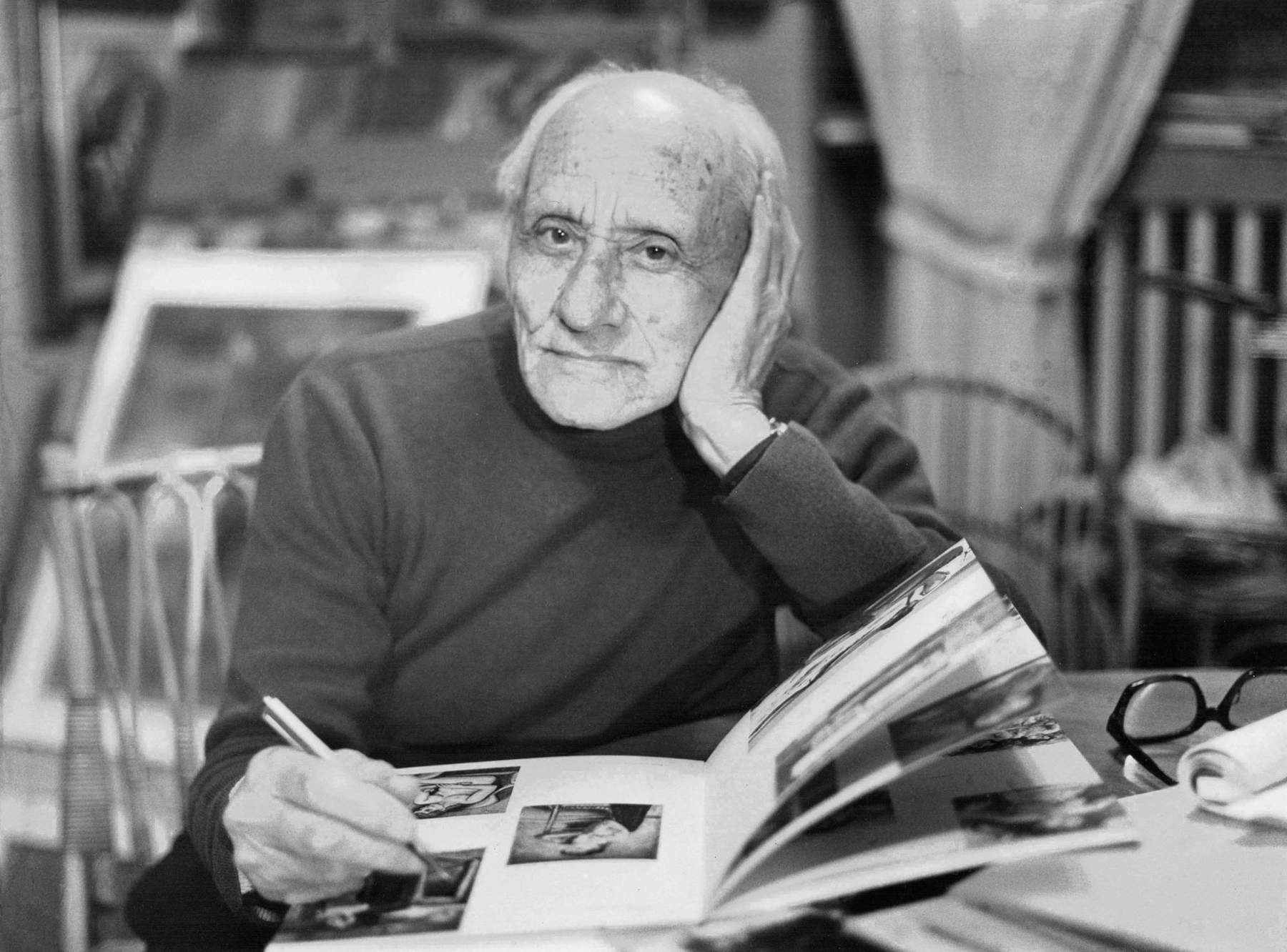 |
| Alfredo Catarsini in the 1980s |
The artist experimented with all the currents and “isms” of the 20th century, creating two: “Reflexism” and “Mechanical Symbolism.” While maintaining a reserved and shy attitude, thanks to his culture and intellectual vivacity, the artist assimilated the various suggestions that came from the most interesting artistic experiments of the century. After the first period close to naturalism, with a verist matrix borrowed from Viani, Catarsini approached Primitivism, the Call to Order of the 1930s. In the years of World War II he started a personal pictorial quest that he would later call “Reflexism,” borrowed from his brief experience in Second Futurism. The paintings of this period grew out of the observation of the reflections of the external environment on the glass panes of the paintings themselves, in a cross-reference of lines and intense colors.
He then approached Expressionism and Neo-Cubism, especially after his participation in the 1948 Venice Biennale, where he met the artists of the newly formed Fronte Nuovo delle Arti (Vedova, Turcato, Birolli, Santomaso, Corpora, Guttuso, Leoncillo, Afro). This attention to new forms gave rise to his “Mechanical Symbolism”: mechanical gears, the result of man’s labor and technology, represent the symbol of the civilization of the new century. Catarsini appreciates and exalts the technique that leads man to unimaginable achievements and the dynamism that comes with it; later, however, he arrives at the realization that human beings cannot master what they have created, and in mechanical compositions he inserts faces and figures as if with astonished expression to denounce the incommunicability and loneliness of man, now reduced to an automaton, trapped in the mechanical gears of production.
Throughout his long career of experimentation and pictorial research, however, Catarsini never abandoned the painting of thoughtful contemplation of his deeply loved land and his interest in the human being. Landscapes, along with portraits and figures, are constant subjects throughout his oeuvre and he often returned to his habitat: marinas, boats, ships, shipyards and the often bare and naked, almost dusty beaches, executed with a palette of muted and melancholy tones, as were often the figures of the 1930s and 1940s. Little known, finally, is his religious fresco painting, which has its greatest achievements in the fresco for the apse basin of the church of San Martino in Freddana, and in the recently restored church of San Tommaso in Castagnori, not far from Lucca.
Catarsini therefore did not follow defined chronological paths, but chose from time to time what the mood or a formal urgency suggested to him, as he himself writes: “The subject is a pretext for making art, so everything is legitimate, there is no dilemma of going from the abstract to the figurative and vice versa, for the artist it is the same. Painting changes as the seasons change.”
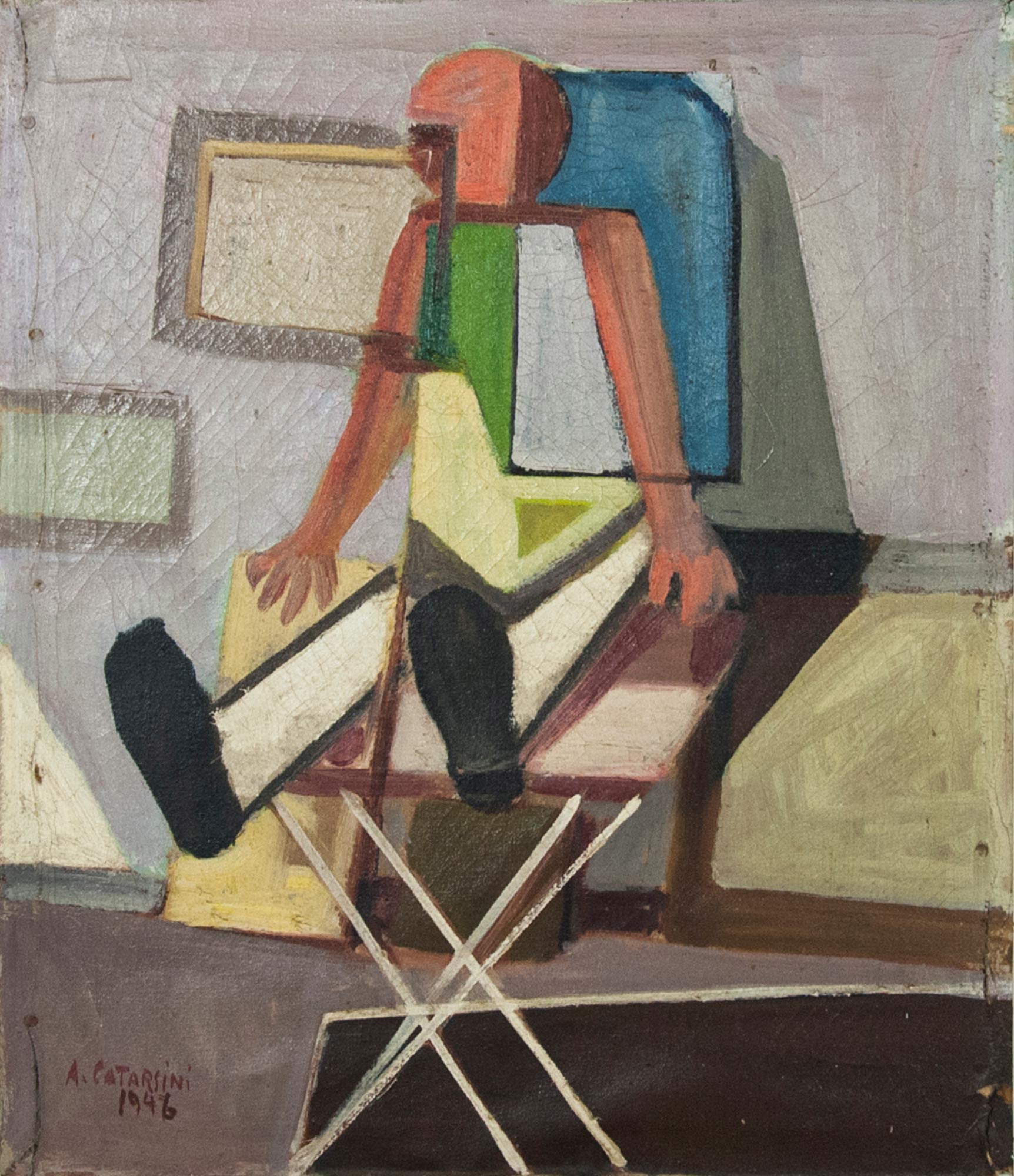 |
| Alfredo Catarsini, Reflexism (1946; oil on canvas) |
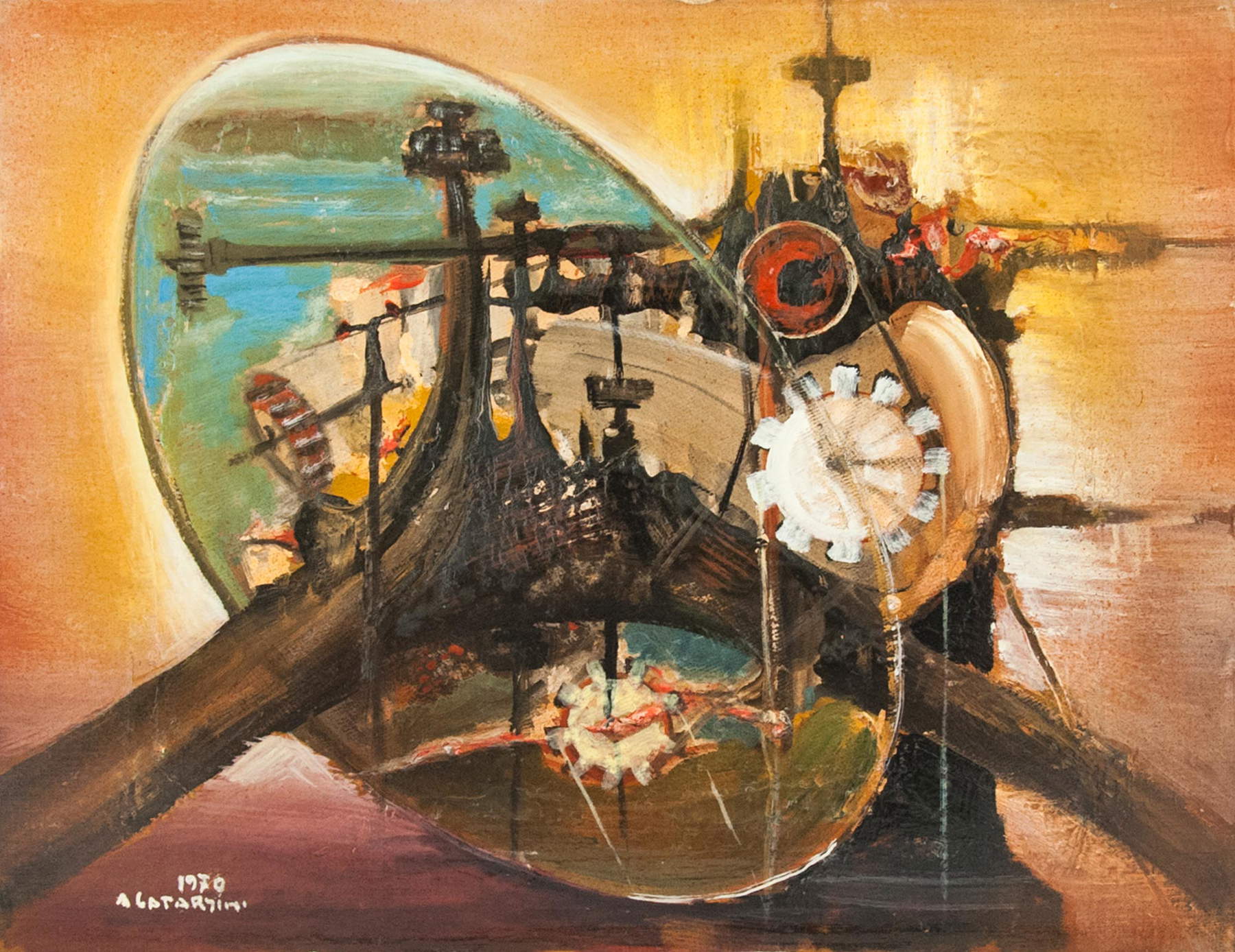 |
| Alfredo Catarsini, Mechanical Symbolism (1970; oil on canvas) |
At the request of the Viareggio municipal administration, Foundation President Elena Martinelli has refitted Alfredo Catarsini Catarsini’s atelier, which was used by him for nearly 50 years, and has been open to the public since 2003. The atelier occupies two rooms in the attics of Palazzo Paolina Bonaparte in Viareggio (Via Machiavelli 2) and is part of the museum itinerary of the Civic Museums of Villa Paolina Bonaparte. The studio was also a meeting place for artists, connoisseurs and friends. The studio is presented as it was left by the painter (with easels, paintings, chairs, brushes and newspaper clippings) and evokes the Parisian atmosphere of the artistic ateliers of the early 20th century. Joining the studio in another room in the north side attic is the artist’s historical archive, reordered by the Istituto Storico Lucchese and currently curated by art historian Claudia Menichini.
Finally, in addition to the Self-Portrait of 1934, which became part of the Uffizi Gallery’s collection in 2005, as many as 30 of Catarsini’s works donated by his children Mity and Orazio to the Municipality of Viareggio in 2001 are preserved in the Lorenzo Viani Civic Gallery of Modern and Contemporary Art in Viareggio.
 |
| The Catarsini Atelier |
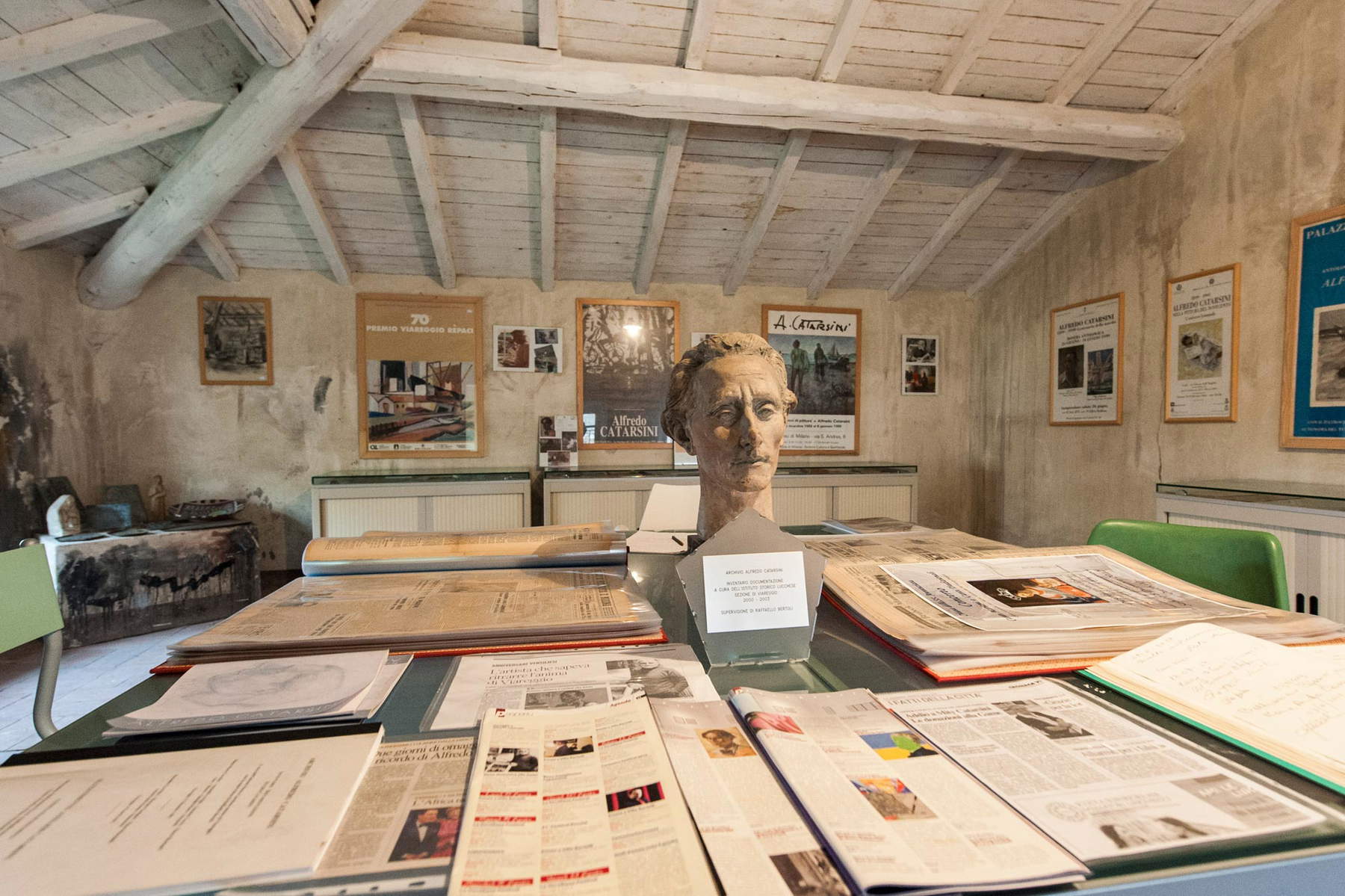 |
| The Catarsini Atelier |
 |
| Viareggio establishes foundation that will promote the work of Alfredo Catarsini, 20th century painter |
Warning: the translation into English of the original Italian article was created using automatic tools. We undertake to review all articles, but we do not guarantee the total absence of inaccuracies in the translation due to the program. You can find the original by clicking on the ITA button. If you find any mistake,please contact us.